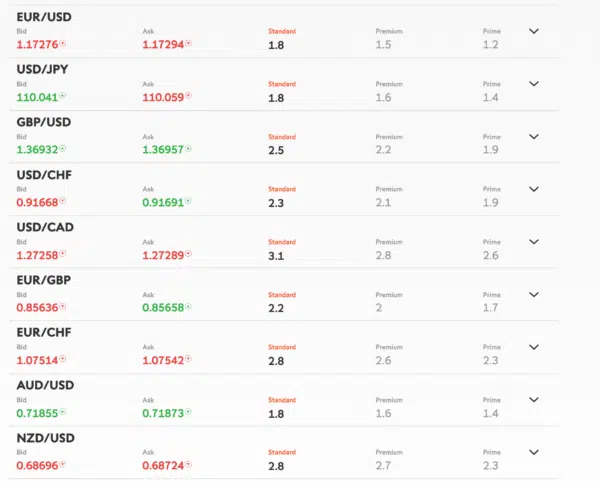Assessing The Economic Contribution Of Major Rave Festivals

Table of Contents
The booming popularity of major rave festivals has sparked debate beyond the dance floor. This article delves into the significant, often underestimated, economic impact of these events, exploring how they contribute to local and national economies. We'll assess the various revenue streams and wider economic benefits generated by these large-scale celebrations of electronic dance music, examining the multifaceted world of rave festival economics.
Direct Economic Impacts of Rave Festivals
Rave festivals generate substantial direct economic activity through multiple revenue streams. Understanding these direct impacts is crucial for evaluating the overall economic contribution of these events.
Ticket Sales and Revenue
Ticket sales form the bedrock of a rave festival's revenue. The significant revenue generated is impacted by factors such as varying ticket tiers (general admission, VIP, platinum), early bird discounts, and group packages. This initial influx of cash acts as an economic multiplier, stimulating further spending within the local economy. Successful festivals employ sophisticated ticketing strategies, including dynamic pricing and tiered access, maximizing revenue and managing demand effectively.
- High ticket prices contribute significantly to overall revenue.
- Early bird discounts stimulate early sales and improve cash flow forecasting.
- VIP packages increase the average revenue per attendee, boosting profitability.
- Implementing dynamic pricing based on demand optimizes revenue generation.
Merchandise and Concessions
Beyond ticket sales, merchandise and concessions represent a substantial revenue stream. Festival-branded clothing, accessories, and other memorabilia create lasting brand loyalty and generate significant income. Food and beverage sales within the festival grounds are equally important, supporting local vendors and contributing to the overall economic activity. Sponsorships and brand collaborations further amplify this revenue, injecting additional capital and increasing the festival's reach.
- Festival merchandise creates lasting brand loyalty and generates substantial revenue.
- Food and beverage vendors contribute significantly to local economies through employment and sales.
- Sponsorships provide substantial additional revenue streams and marketing opportunities.
- Strategic partnerships with local businesses can maximize the economic benefits.
Accommodation and Transportation
The influx of attendees necessitates increased accommodation and transportation services. Hotels, hostels, and Airbnb rentals experience a surge in demand, benefiting local hospitality industries. Transportation services, including taxis, ride-sharing apps, and public transport, also see a significant increase in demand during festival periods. This increased economic activity translates into wider tourism benefits, with visitors potentially exploring the local area beyond the festival grounds.
- Increased demand for accommodation boosts local hospitality industries and generates employment.
- Transportation services experience a surge in demand during festival periods, creating jobs and revenue.
- Local businesses benefit from increased tourism during and after the festival.
- Investment in improved public transport infrastructure can enhance the overall economic impact.
Indirect Economic Impacts of Rave Festivals
The economic impact of rave festivals extends far beyond direct revenue streams, impacting employment, tax revenue, and brand promotion.
Employment Generation
Rave festivals create numerous temporary and permanent jobs. From security personnel and event staff to food vendors and merchandise sellers, these events generate substantial employment opportunities. This extends to related industries, such as restaurants, bars, and shops, which experience increased business during the festival period. Long-term effects include infrastructure development that can create sustained job creation.
- Festivals generate substantial temporary employment opportunities, boosting local employment figures.
- Local businesses benefit from increased staffing needs, expanding their workforce and revenue.
- Long-term infrastructure improvements, such as upgraded roads or public transport, lead to sustained job creation.
- Opportunities for local artists and musicians are created, contributing to the cultural landscape.
Tax Revenue and Local Government Income
The economic activity generated by rave festivals translates into significant tax revenue for local, regional, and national governments. Tax revenue is derived from ticket sales, merchandise sales, and other festival activities. Licensing fees and permits further contribute to public coffers, providing funding for essential community services and infrastructure projects.
- Significant tax revenue is generated for local, regional, and national governments.
- Licensing fees and permits contribute to public coffers, supplementing government budgets.
- Increased tax revenue can fund community projects and improve public services.
- Transparent and efficient tax collection mechanisms maximize the economic benefit for local authorities.
Brand Promotion and Tourism
Successful rave festivals attract significant media attention, promoting the host location and boosting its brand image. Positive media portrayals contribute to increased tourism, generating revenue for local businesses and strengthening the region's economic profile. The festival brand itself can attract repeat visitors and establish the location as a desirable tourism destination, leading to long-term economic benefits.
- Successful festivals attract international media coverage, enhancing the host location’s reputation.
- Positive media portrayals boost tourism and economic development, creating a lasting positive impact.
- The festival brand attracts repeat visitors and further economic activity, contributing to sustainable tourism.
- Strategic marketing and promotion of the festival can maximize the long-term tourism benefits.
Conclusion
Major rave festivals contribute significantly to local and national economies through both direct and indirect means. From the immediate revenue generated by ticket sales and concessions to the longer-term impacts on employment, tourism, and tax revenue, these events demonstrate considerable economic value. Understanding the full economic contribution of rave festival economics is crucial for policymakers and organizers alike, as it highlights the potential for sustainable growth and economic benefits in hosting such events. Further research and data analysis can further illuminate the multifaceted economic impact of these large-scale events and help to maximize their positive contributions to the communities that host them. Let’s continue to assess the economic impact of rave festivals and leverage their potential for positive economic growth.

Featured Posts
-
 Epic Games Seeks Court Order To Reinstate Fortnite On Us App Store
May 19, 2025
Epic Games Seeks Court Order To Reinstate Fortnite On Us App Store
May 19, 2025 -
 Morales Real Deal Knockout Ufc Vegas 106 Fight Analysis And Reactions
May 19, 2025
Morales Real Deal Knockout Ufc Vegas 106 Fight Analysis And Reactions
May 19, 2025 -
 Fund Pickleball Courts In Olive Branch Donation And Bid Process
May 19, 2025
Fund Pickleball Courts In Olive Branch Donation And Bid Process
May 19, 2025 -
 European Futures Trading Update From Swissquote Bank
May 19, 2025
European Futures Trading Update From Swissquote Bank
May 19, 2025 -
 Amazon Faces Union Challenge Over Quebec Warehouse Closure
May 19, 2025
Amazon Faces Union Challenge Over Quebec Warehouse Closure
May 19, 2025
